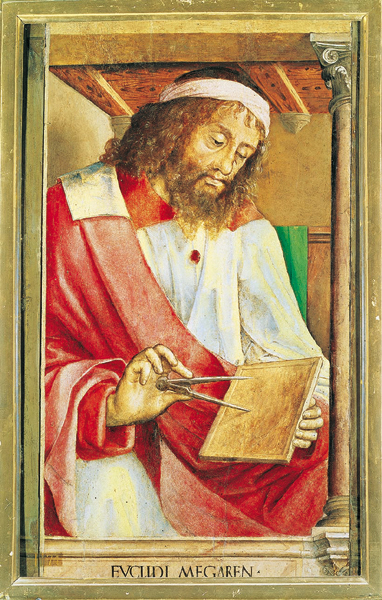Image Details

Scala/Art Resource, NY
Father of geometry. The Alexandrian scholar Euclid is depicted calipers in hand by the 15th-century Dutch painter Joos van Ghent; the work is now in the Palazzo Ducale, in Urbino, Italy. In the early years of the Alexandria Library, about 300 B.C.E., Euclid founded a school of science and mathematics, which probably became a significant part of the library’s university center. In addition to his brilliant study of plane geometry, entitled Elements (which was put into its standard form by later scholars at the library), Euclid wrote important works on such subjects as optics and music. Next to the Bible, his Elements is probably the most widely translated book ever written—and it remains a standard geometry textbook even today. Because of Euclid’s innovations in mathematics, a later scholar at the library, Eratosthenes of Cyrene (275–175 B.C.E.), was able to develop an accurate method for measuring the circumference of the earth (see sidebar to this article).
